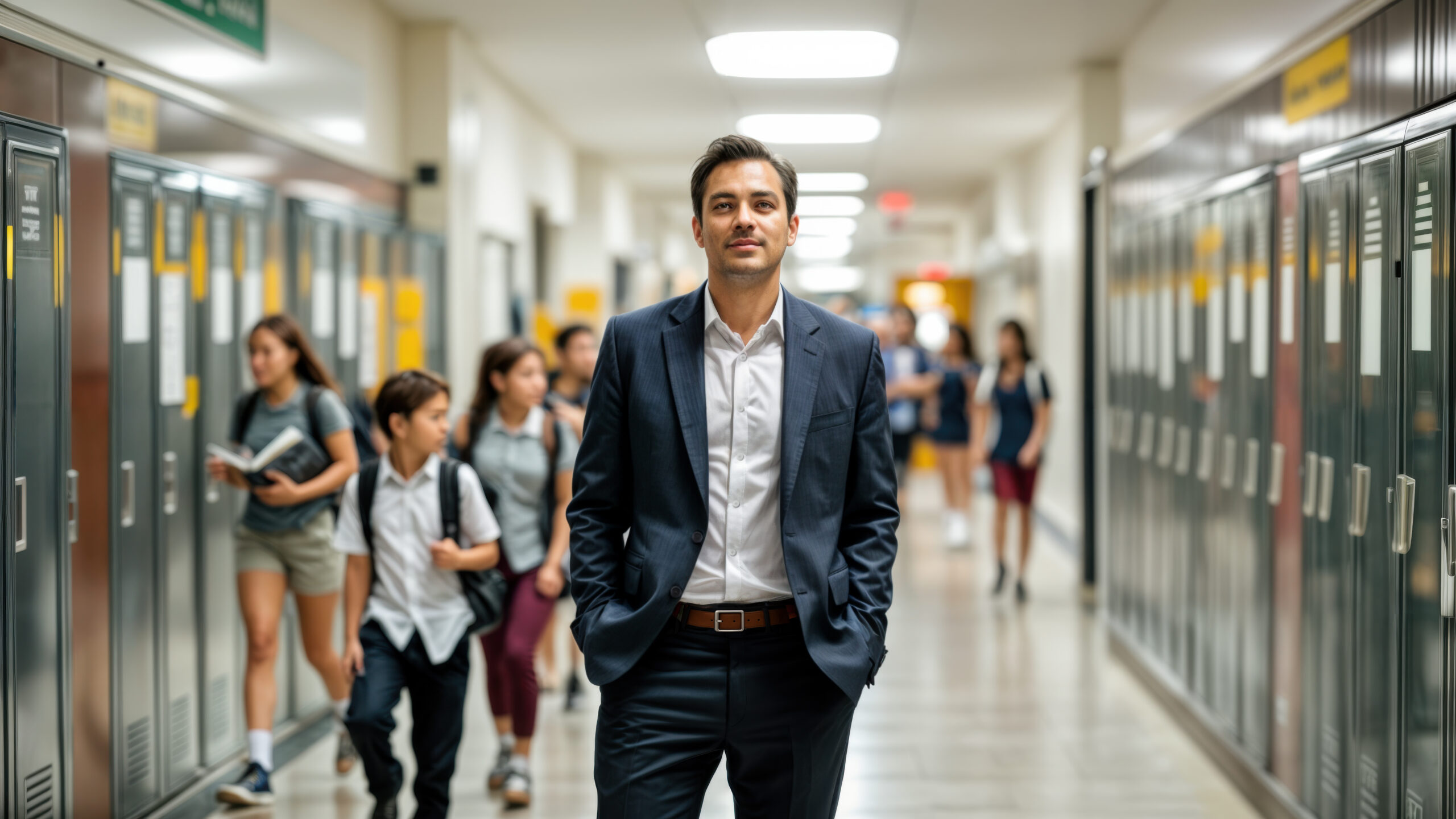Rethinking the Principal’s Role
When people think of a school principal, they often picture a disciplinarian, an instructional coach, or someone who makes announcements over the intercom. While those elements are still part of the job, the role of a school leader has changed dramatically. Today’s principals need to think and act like CEOs—strategic thinkers who can lead complex organizations through change, growth, and uncertainty.
Running a school is more than just managing people and programs. It’s about setting a vision, aligning resources, measuring performance, and creating a culture where both students and staff can thrive. That’s not unlike what CEOs do in the private sector. As someone who came into school leadership with a background in athletics and entrepreneurship, I’ve found that applying business principles to school administration has been one of the most effective ways to drive real progress.
Vision First, Always
Every successful organization starts with a clear and compelling vision. In schools, that means going beyond test scores or graduation rates. What kind of young people are we trying to develop? What values do we want to instill? What kind of culture are we building in our classrooms, hallways, and communities?
As principals, we need to consistently communicate that vision—not just to teachers, but to students, parents, board members, and community partners. Just like a CEO rallies stakeholders around a mission, we must inspire our school communities to work toward a shared purpose. A strong vision sets the direction for everything else: instruction, hiring, budgeting, even how we handle discipline.
Strategic Use of Resources
In business, resources are allocated to maximize return on investment. In education, our ROI isn’t profits—it’s student growth, teacher retention, and school culture. We don’t always have big budgets, especially in smaller or rural districts, but we do have choices in how we use what we have.
That means being intentional about staffing, technology, and professional development. It also means understanding the true cost of programs—not just financially, but in terms of time, energy, and impact. For example, does that new curriculum align with our vision? Are we spending money on things that move the needle, or just reacting to the latest trend?
Strategic leaders are proactive, not reactive. We need to constantly assess whether we’re using our limited resources in ways that truly serve our students.
Data-Driven Decisions
In both education and business, leaders need clear metrics to evaluate performance. For principals, that goes beyond standardized test scores. We need to look at attendance, engagement, discipline patterns, staff turnover, and student voice.
The key is not just collecting data—it’s knowing how to interpret it and act on it. CEOs look at dashboards and KPIs to make decisions. We should be doing the same. Which grade level is struggling the most? Why are students missing school on Mondays? Why are certain teachers thriving while others are burning out?
When we make decisions based on data instead of assumptions, we gain credibility, and we build trust. We also make better use of our time and avoid wasting energy on ineffective strategies.
Building High-Performing Teams
Great companies are built on great people. The same is true for schools. As principals, one of our most important responsibilities is hiring and retaining strong teachers—and developing the ones we already have.
This is where the CEO mindset becomes crucial. A CEO doesn’t just hire employees and hope for the best. They invest in leadership development, provide feedback, and create structures that help people grow.
We should be doing the same for our teachers. That might mean creating leadership roles within the building, encouraging collaboration, or using coaching models that actually work. The more we invest in our people, the stronger our schools become.
Adapting to a Changing Landscape
The educational landscape is shifting faster than ever. Technology, mental health, workforce demands, equity concerns—it’s a lot to manage. But just like in the business world, those challenges come with opportunities.
If we think like CEOs, we stop seeing problems as barriers and start viewing them as areas for innovation. That’s where strategic thinking matters most. How can we redesign the school schedule to better meet student needs? What community partnerships can we develop to support student wellness? Can we rethink professional development to be more job-embedded and personalized?
When we lead with curiosity and courage, we model the very adaptability we want to instill in our students.
In Conclusion
The job of a principal is no longer just about keeping the building running. It’s about leading with strategy, purpose, and innovation. It’s about thinking like a CEO while keeping the heart of an educator.
Our schools need leaders who can navigate uncertainty, inspire others, and make smart decisions that lead to long-term success. That’s not easy—but it’s what our students and communities deserve.
By embracing strategic thinking and viewing ourselves as organizational leaders, not just school managers, we position ourselves to create schools where every student—and every educator—can thrive.
